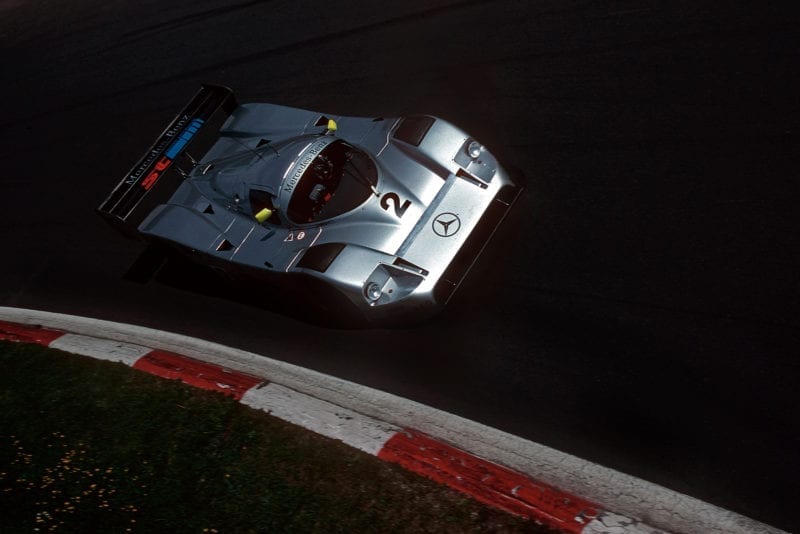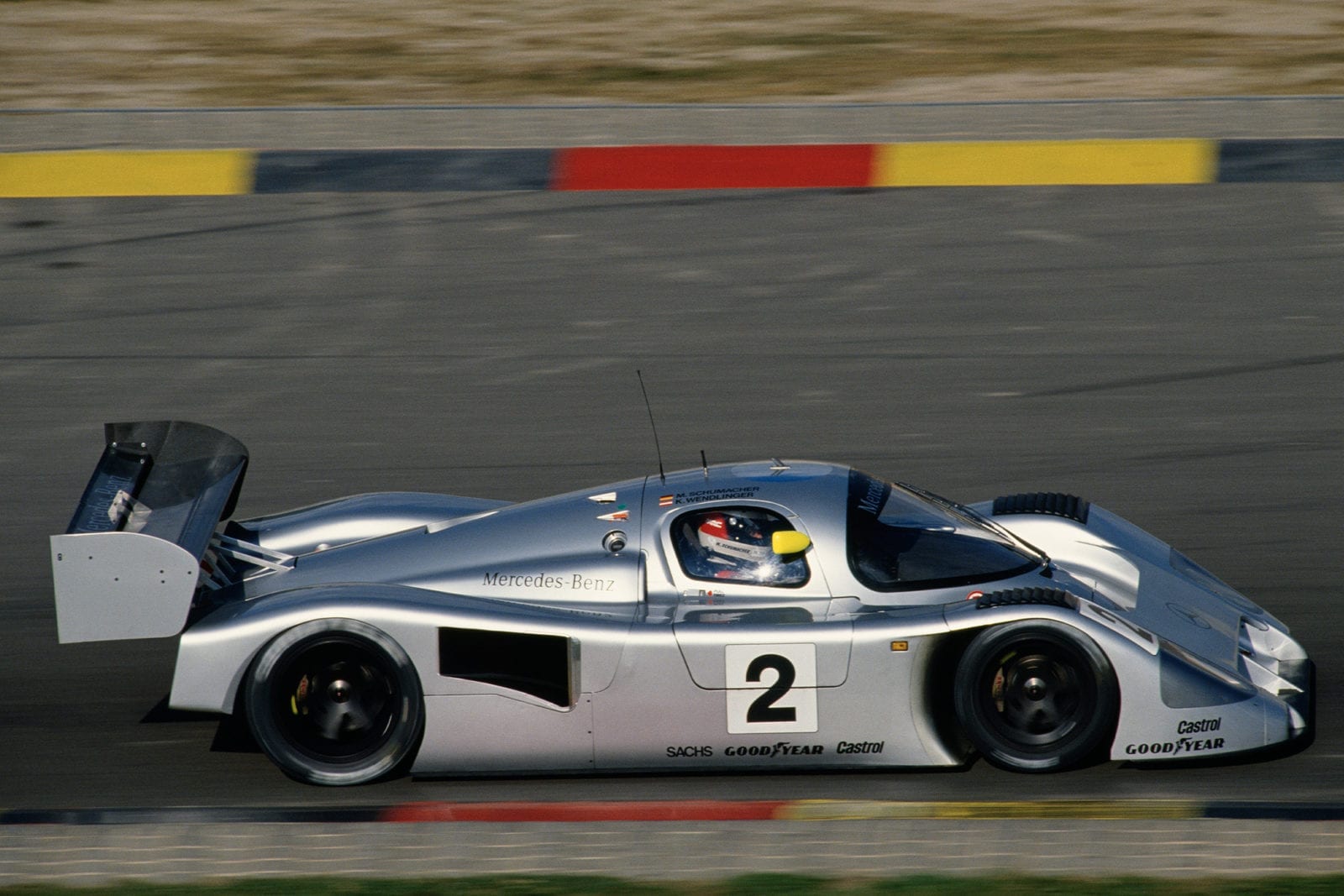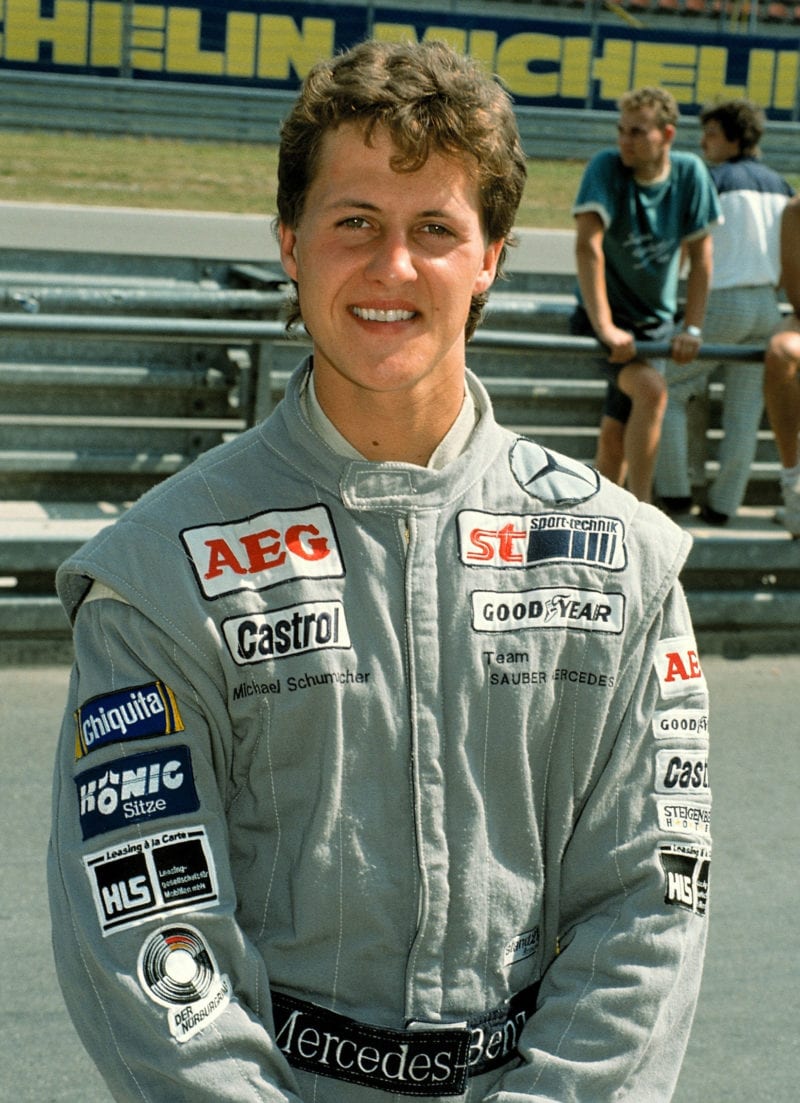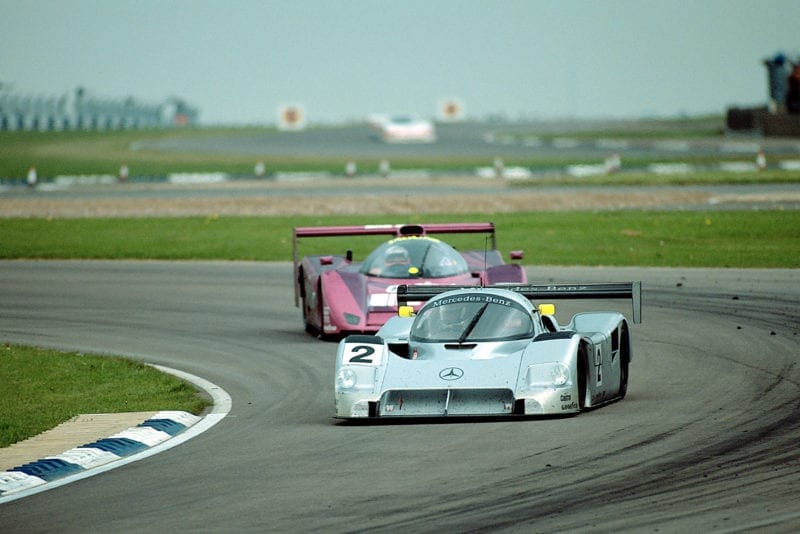Not only was Schumacher “spinning all over the place”, according to outgoing Sauber team manager Dave Price, but he contrived to get involved in a wheel-banging match with a Porsche 962C driven by Jo Winkelhock. The result was a trip through the gravel for the Sauber and a slap on the wrist for its driver.
“When the ‘kids’ asked us how they were comparing with the other drivers we told them that we weren’t timing them and that the whole point of the test was for them to get used to the car,” recalls Bob Bell, who engineered the Junior drivers at Ricard. “When Schumacher went off we made him clean out the car.”
Bell says that Schumacher was the slowest of the three over the two days. “He spoiled it for himself,” explains the Brit who moved with Price to Nissan’s Group C team for 1990. “He wasn’t so fast because he didn’t get so many laps.”
Exactly who was fastest isn’t clear 15 years on. Bell reckons that it was Wendlinger, though the notes that would confirm it are lost. Most of the other people involved in the programme believe it was Frentzen. Certainly the latter, who was 22 at the time, emerged fastest of the trio during subsequent tests at Ricard, Jerez and Hockenheim.
These winter runs were designed specifically to prepare for a WSPC campaign during which the Juniors would take turns at the wheel of the second Team Sauber Mercedes car alongside Jochen Mass. The sportscar veteran, who would tutor the youngsters — and the architect of the Junior programme, Mercedes race director Jochen Neerpasch — rate Frentzen as the one who showed the most potential at this stage. “We clearly had three very good drivers,” says Mass, “but it was Heinz-Harald who had the most obvious speed.”
Or at least it was the oldest of the three who got up to speed the quickest. “Frentzen would be the one who was on the pace straight away, then Schumacher and then Wendlinger,” explains Neerpasch. “Heinz-Harald clearly had a lot of natural talent. I wouldn’t say he didn’t take it seriously, but it seemed easier for him. Michael had to work at it — and so he did. He was more systematic and more analytical.”

Schumacher hits the brakes in a Sauber-Mercedes C9
Daimler
Schumacher’s burning desire to make himself and his car ever faster, a cornerstone of his record-breaking F1 career, became evident in his maiden sportscar season, in which he contested three races in that year’s Mercedes C11. A fourth, his scheduled debut at Silverstone, turned out to be a false start when he was disqualified in practice for receiving assistance beyond the pitlane.
Mass: “He was constantly asking questions and always thinking about how he could change the car. I was in charge of its set-up and often had to tell him to leave things alone.”
Neerpasch calls the Schumacher of 1990 vintage — a driver in only his third season of car racing — a “rough diamond”. It was his desire for self-improvement that allowed him to quickly polish up his skills. “He was like a baby,” says Neerpasch. “By that I mean he had a baby’s ability to learn. He learnt in one year what other people learn in three or four years, and not only technically.”
Even before the end of the 1990 season, Schumacher was emerging as the standout among the three.
“We thought Michael was the one over the winter, but he confirmed it during the season,” Neerpasch says. “We realised that he was much more than a very good driver, that he was something outstanding.”

Schumacher at Monza in 1991
Paul-Henri Cahier/Getty Images
That much was evident from the outside, too. It was Schumacher who made the biggest impression, even though Wendlinger achieved almost identical results alongside Mass. Frentzen, meanwhile, was in the process of ducking out of the Mercedes Junior programme. First, he had opted to concentrate on his debut season in Formula 3000 with Eddie Jordan and found time to take in just one WSPC round. Then he quit altogether to focus full-time on single-seaters for 1991.





